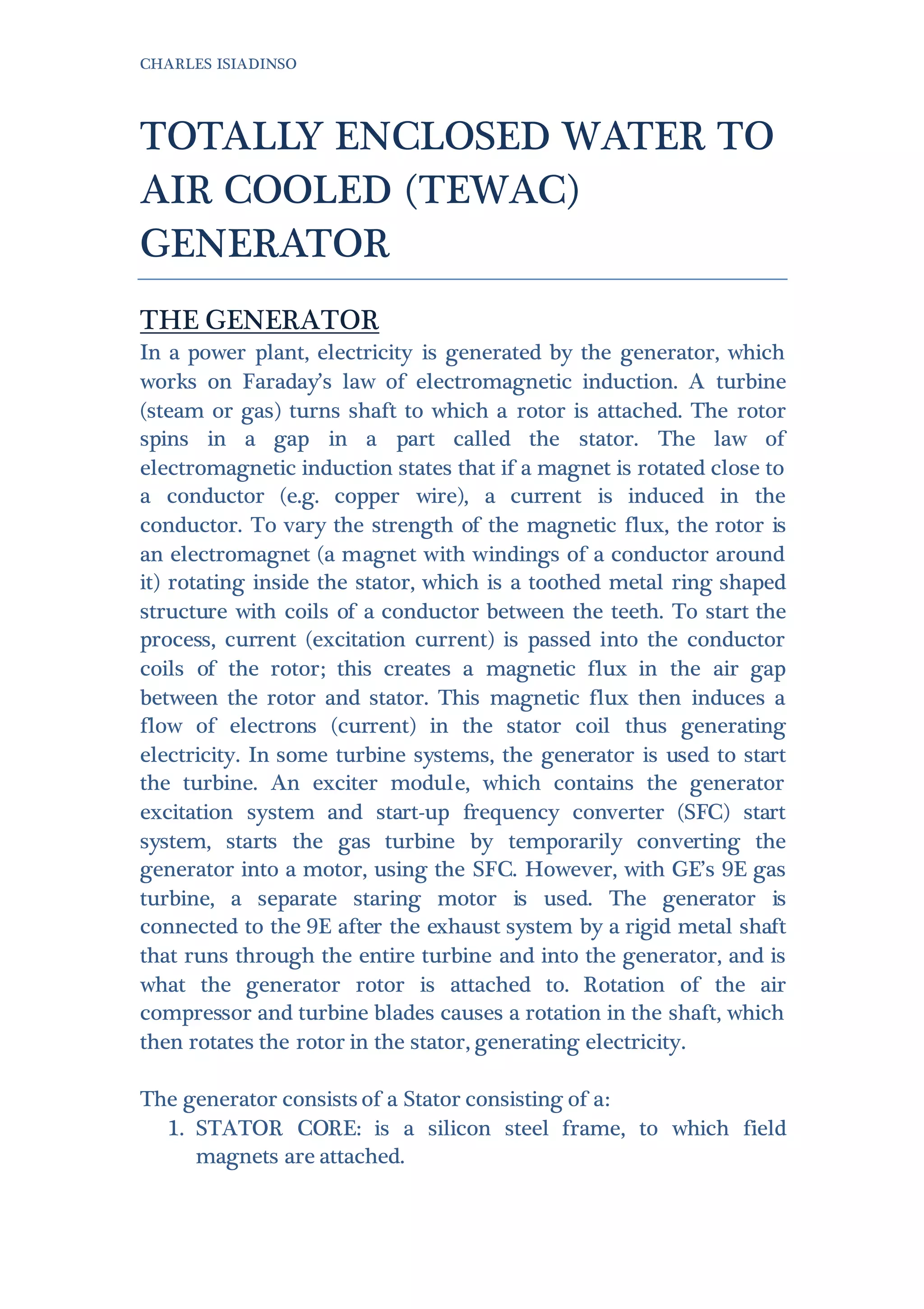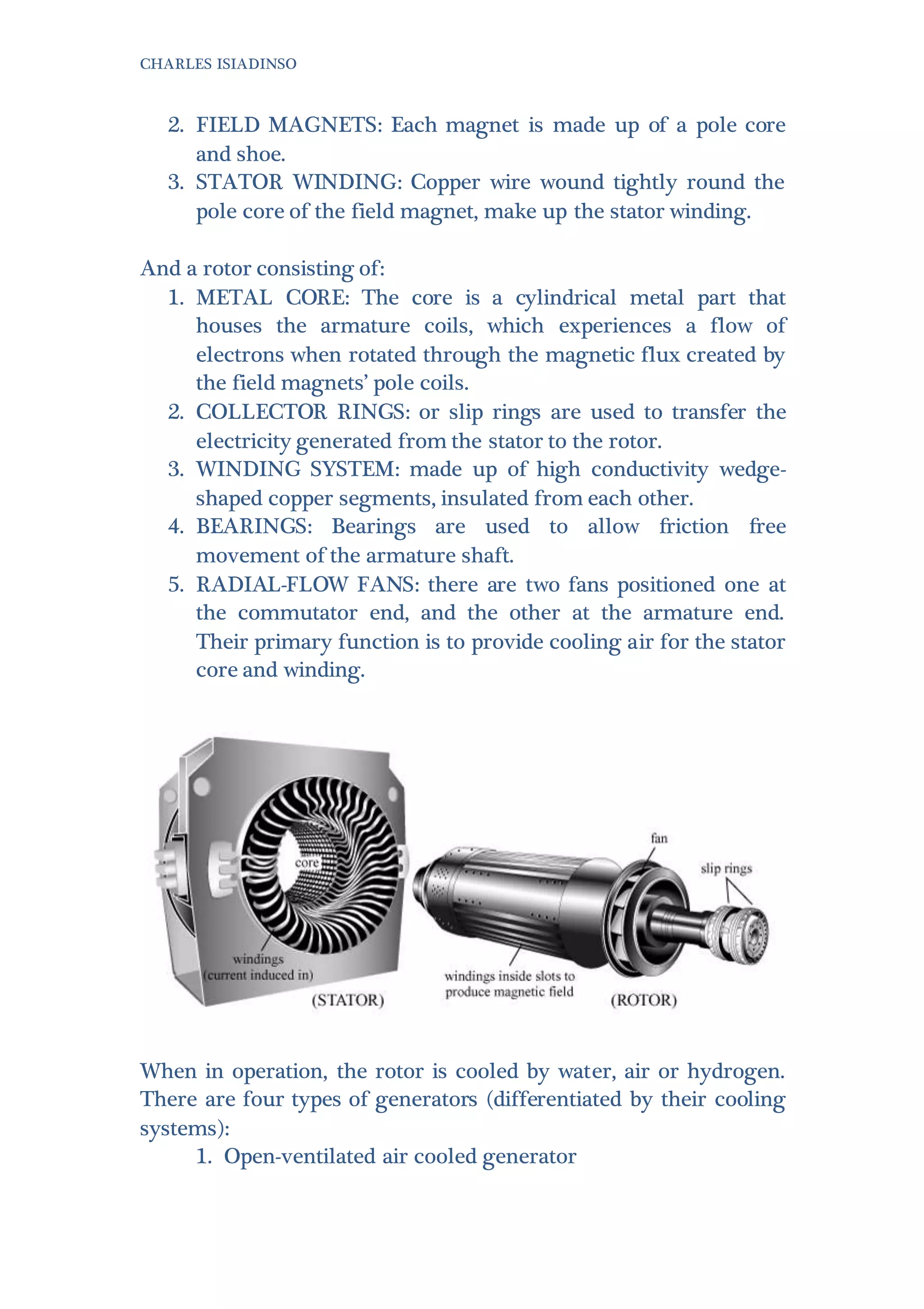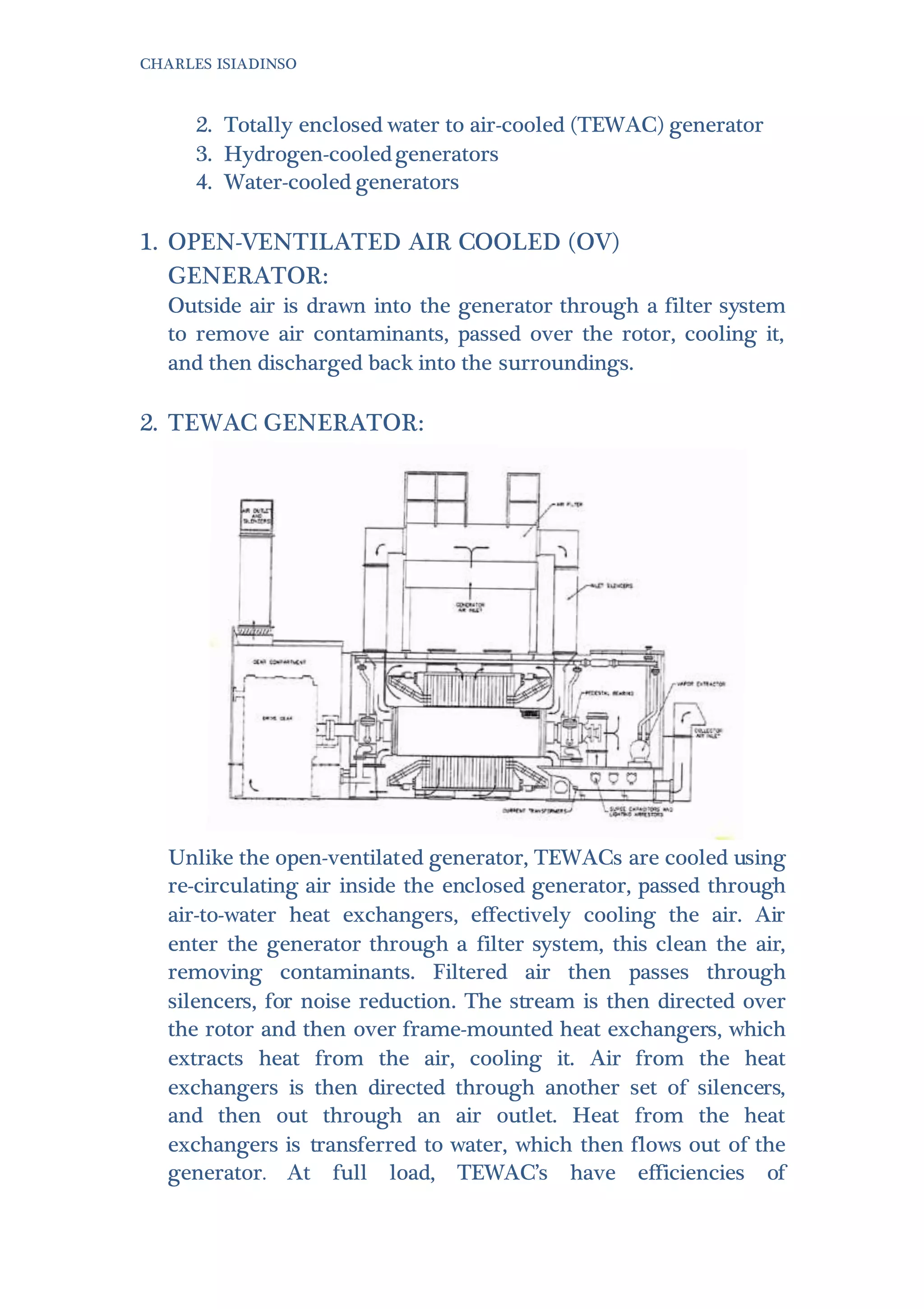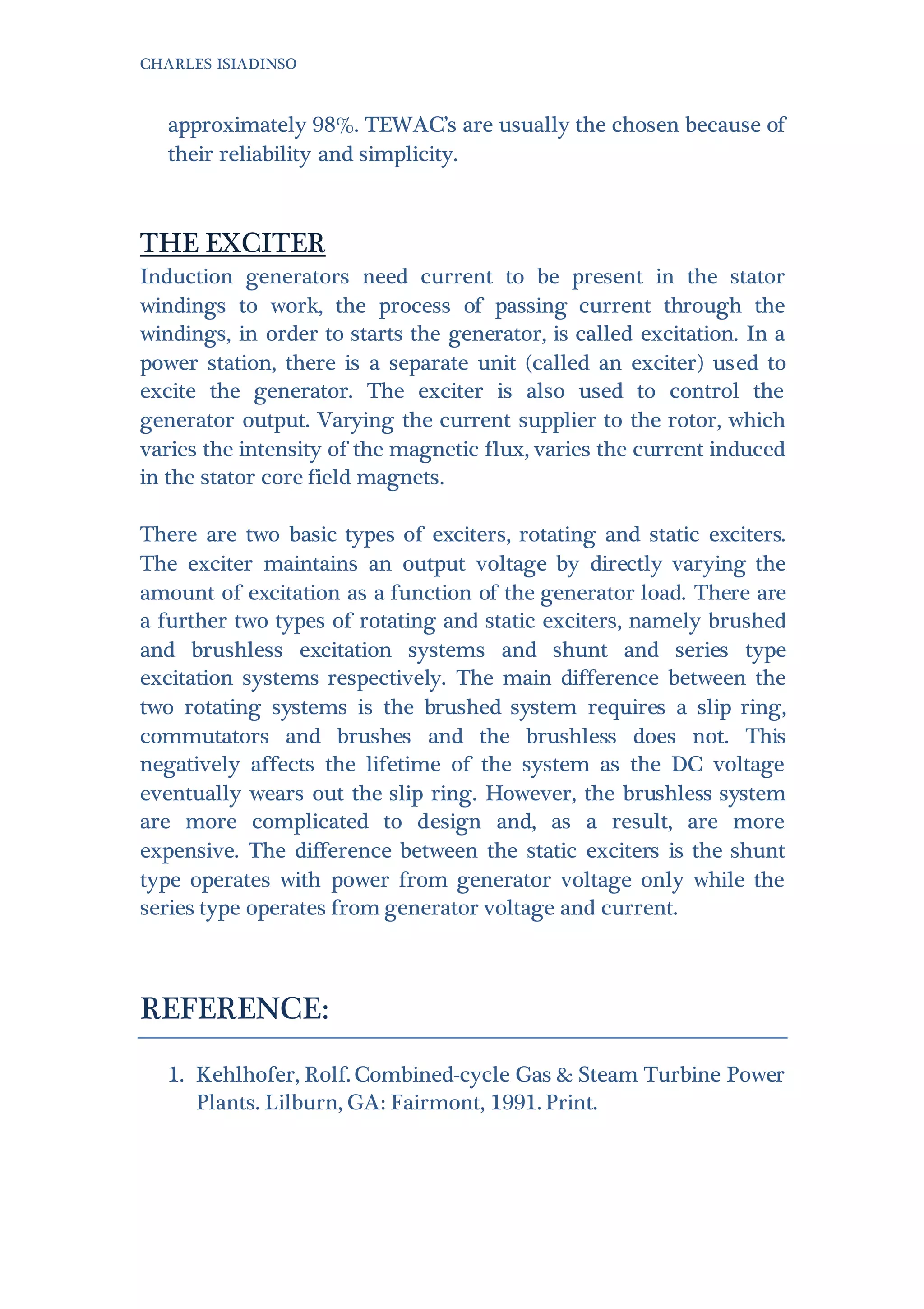The document discusses different types of generators used in power plants, focusing on Totally Enclosed Water to Air Cooled (TEWAC) generators. TEWAC generators circulate cooled air inside the enclosed generator through air-to-water heat exchangers to cool the rotor, unlike open-ventilated generators which draw in outside air. The document also describes the basic components of generators, including the stator, rotor, and exciter, which is a separate unit that provides current to the rotor to start power generation and control output.




![CHARLES ISIADINSO
2. "Generators - Air-Cooled Generators | GE Energy." GE
Energy. N.p., n.d. Web. [Accessed17 June 2014].
3. Petchers, Neil. Combined Heating, Cooling & Power
Handbook: Technologies & Applications. Lilburn, GA:
Fairmont, 2003. Print.](https://image.slidesharecdn.com/e2468e5e-daa8-483a-a6a8-806f3fde90f1-150210101803-conversion-gate01/75/2-Tewac-Generator-5-2048.jpg)